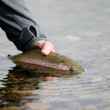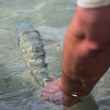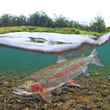After several years of effort, wild steelhead advocates are claiming a victory in southwest Washington after the Washington Department of Fish and Wildlife (WDFW) announced that it would cease all steelhead planting in perpetuity on four of the state's rivers. These rivers will be established as wild steelhead gene banks, part of an effort to restore and revitalize native steelhead populations throughout Washington.
Effective immediately, steelhead stocking will cease on the East Fork of the Lewis, the North Fork of the Toutle and the Green rivers. The Wind River, which hasn't been stocked since the late 1990s, will also remain unstocked in perpetuity and serve as part of the wild steelhead gene bank.






























